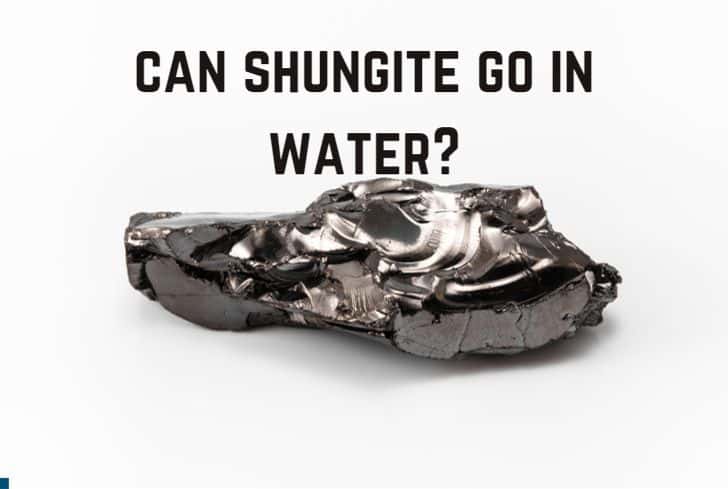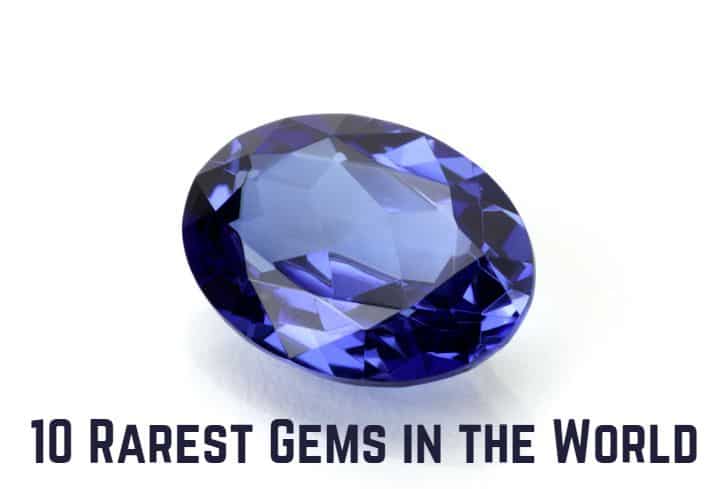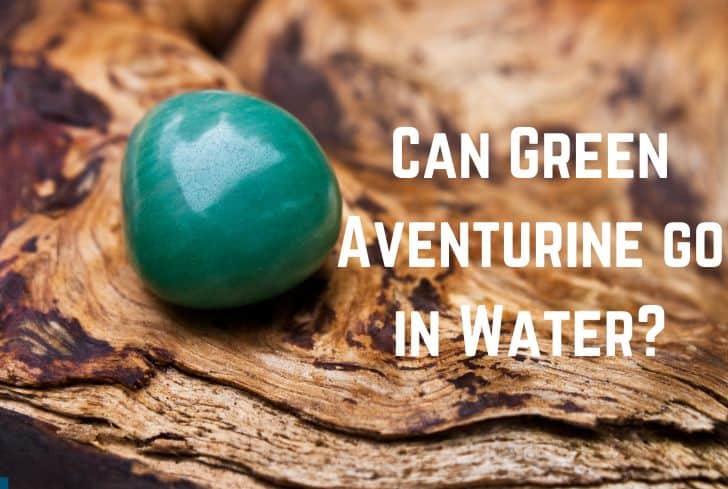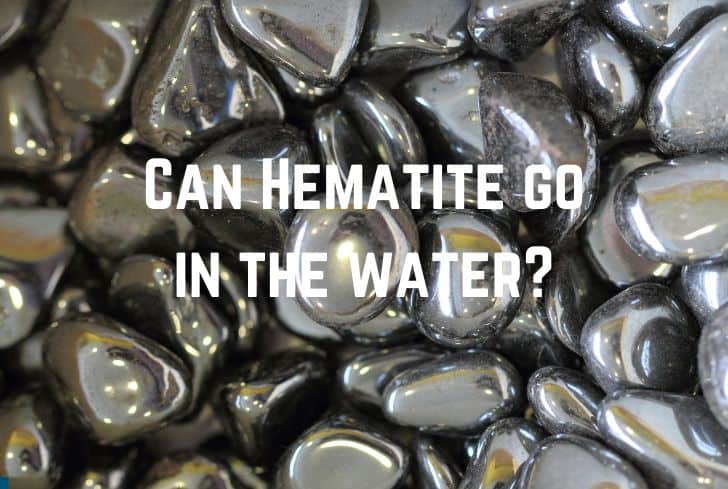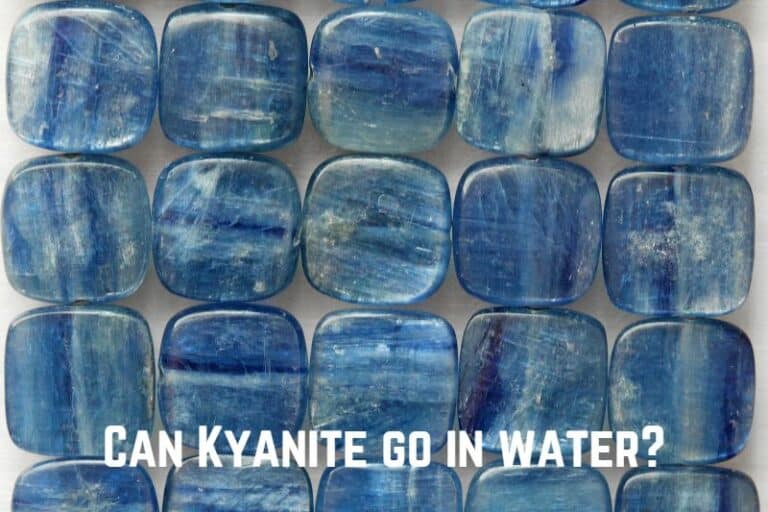Can Malachite Go in the Water? (Answered)
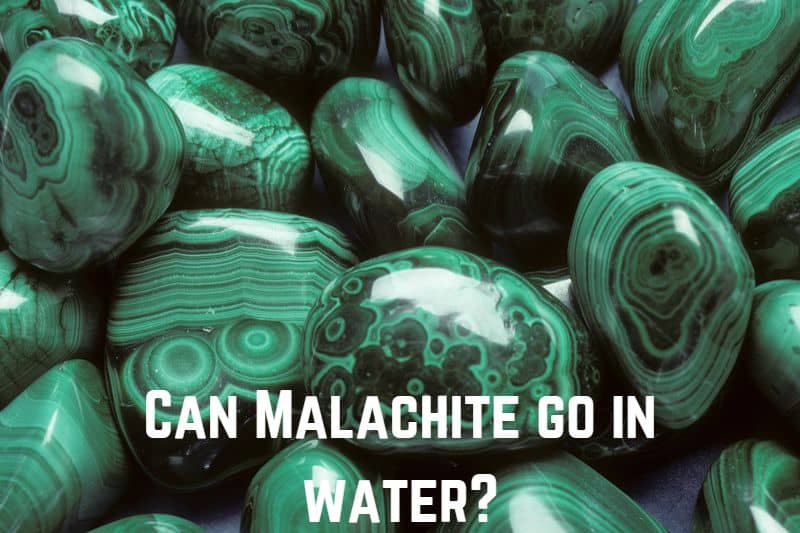
Malachite is a copper carbonate hydroxide mineral, having the chemical formula of Cu2CO3(OH)2. Malachite was one of the first copper ores and continues to be popular today as a gemstone. Its name is derived from the Greek term malāchē meaning “mallow”; this is because the mineral’s green color resembles the leaves of the mallow tree.
Have you ever wondered if malachite can go in the water? In this article, we are going to discuss just that. We will talk about the stone’s interaction with water, salt water, and moon water. We will learn how to cleanse it, while also looking at its properties and uses.
Read: Can Larimar Go in the Water? (And Salt Water?)
Can Malachite Get Wet?
No, malachite should not get wet. It is a soft stone having a value of 3.5 to 4.0 on the Mohs Hardness Scale, which is below the minimum value required for minerals to be safe underwater. Moreover, its copper content can react adversely with water.
Mohs Hardness Scale is a relative measure of a mineral’s resistance to scratching. Besides that, it also indicates a stone’s relationship with water. Usually, a value over 5.0 implies that the stone is safe for immersion.
Malachite has a value of 3.5 to 4.0 on the Mohs Hardness Scale, so it is not at all safe when immersed. Water enters the crevices of stones, expanding their cracks. These fissures can slowly damage the structure of the stone, making it prone to cracking.
Water also tarnishes the appearance of stones. It strips off the polish from their surface, making them look duller. This is especially bad for a stone like malachite, whose beautiful green color and lustrous surface are what makes it so desirable.
Therefore, malachite should not be immersed in water. While it can resist sweat and limited exposure to water (say a few drops), you should not wear it while swimming or showering. Moreover, the copper content of malachite reacts adversely with water, as we will discuss below.
Is Malachite Toxic to Water?
Yes, malachite can turn water toxic. This is because its copper content will react with the water and make it harmful. Moreover, malachite is a soft stone, which itself will get damaged upon immersion.
Malachite is copper carbonate hydroxide, and copper can constitute 50-60% of the stone’s composition. When the stone comes into contact with water, it can release copper ions through a process known as leaching. These ions will get dissolved in water, increasing copper concentration.
While copper is an essential micronutrient for living beings, at higher levels, it can become toxic. In humans, excessive copper concentration can lead to gastrointestinal issues, liver & kidney damage, and in rare cases, acute poisoning.
Generally, the amount of copper released by malachite in water is minimal. However, you should still not take the risk. Moreover, since malachite is a soft mineral (value of 3.5-4.0 on the Mohs Hardness Scale), it can get damaged in water.
Besides its appearance, its structure can also get damaged. If the stone breaks down, malachite dust will get dissolved in water, which is quite toxic. So, do not use malachite in an elixir. You can instead use minerals like rose quartz, amethyst, etc.
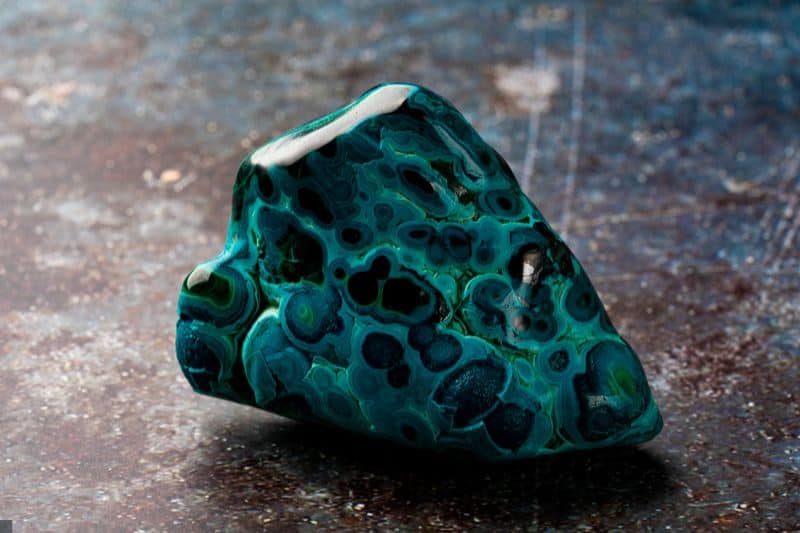
Can Malachite go in Tap Water?
No, malachite should not go in tap water. Any kind of water is harmful to malachite as it is a soft stone having a value of only 3.5-4.0 on the Mohs Hardness Scale, which is less than the minimum value required for minerals to be safe underwater.
Malachite is a soft stone that will get damaged in water. Moreover, it is largely composed of copper, which when immersed, releases copper ions in the water. This increases the copper concentration of water and can make it toxic.
Therefore, for the safety of both the stone and the water, malachite should not be put in tap water.
Can Malachite Go in Salt Water?
No, malachite should never go in salt water. Water itself is quite harmful to malachite as it is a soft stone having a value of only 3.5-4.0 on the Mohs Hardness Scale. When we bring salt into the mix, it makes the corrosive process even worse.
When dissolved in water, salt can seep into the crevices of the stone. Salt particles remain there even after the water evaporates, and they widen the cracks. These fissures can slowly damage the structure of the stone.
Salt water also tarnishes the appearance of the stone by stripping off the polish—this is especially bad for malachite, whose radiant green color is its biggest charm. Finally, salt can also react adversely with the elements of the mineral, and this is especially true for minerals having iron.
Saltwater hastens the process of rusting by making the metal lose its electrons more easily. In the case of malachite, the copper content of the stone will leach and make the water toxic.
Therefore, the stone should never be immersed in salt water. Instead, it can be cleaned by other methods, which we will discuss below.
Can Malachite Go into Moon Water?
No, malachite should not go in moon water. Although placing stones in moon water (water charged by moonlight) is a common way of recharging them, it is not suitable for all stones. Malachite, being quite soft, is not suitable at all in water.
Placing stones in water that has been charged with moonlight is a common way of cleansing them. The stone acquires the gentle energies of the moon and is recharged. However, this method is not safe for all stones.
Malachite is a soft stone that has a value of 3.5-4.0 on the Mohs Hardness Scale. Since this is below the minimum value required (5.0) for minerals to be safe underwater, malachite should not be immersed in water.
Moreover, malachite is constituted of copper, which leaches in water. Higher concentrations of water can be toxic. Therefore, it is best to not put malachite in water.
How to Cleanse Malachite?
Malachite is a soft stone that should not be immersed in water. However, it can be cleansed through various other methods, such as:
- Salt: Although salt water is dangerous for most stones (since dissolved salt seeps into cracks and causes fissures), salt in its solid state is perfectly safe. It can be used to cleanse malachite. Simply fill a bowl with salt and place your malachite stone on top of it for a few hours. Do not bury it, as salt can scratch the stone’s surface. When finished, remove the stone and wipe it with a dry cloth. Throw away the salt.
- Burying: You can bury malachite outside in the soil for a few hours or even for a few days. The length of burying can vary from specimen to specimen, so try what suits you. However, remember that fluorite is extremely sensitive to water. So, do not bury it in a place where the soil is wet or when there is a likelihood of rain.
- Smoke: Another popular method to cleanse stones is using smoke. You simply need to burn sage and then blow out the flame, leaving it smoldering. Then pass your stone above the smoke for about 30 seconds. The smoke will drive out negative energies and purify the stone.
Properties and Uses of Malachite
These are the properties of malachite:
- Physical: Malachite is an opaque, green-banded mineral that has a very bright luster. It usually forms in botryoidal, fibrous, or stalagmitic masses, where it crystallizes in the monoclinic crystal system. The stone has perfect cleavage in one direction.
- Chemical: Malachite is a copper carbonate hydroxide mineral, having the chemical formula Cu2CO3(OH)2. The stone produces effervescence when coming in contact with cold, dilute hydrochloric acid, which helps in identifying it.
- Spiritual: Malachite is believed to help people (especially children) sleep, keeping evil spirits at bay. It was historically worn to protect oneself from lightning and contagious diseases. Malachite is also said to promote health, success, and constancy in love.
These are the uses of malachite:
- Copper Ore: Malachite was one of the first ores of copper, and it was extracted through thermodynamic processes such as smelting. However, today, malachite is rarely used as a copper ore because it is usually found in small quantities and can be sold for higher prices for other purposes.
- Gemstone: Malachite has been used as a gemstone for centuries and continues to be popular today. Its bright green color, lustrous polish, banding & eyes give it an exquisite look. Malachite is also used to produce cabochons, beads, and tumbled stones.
- Pigment: For a long time, malachite was popular as a pigment because the mineral can be grounded easily, mixes well with vehicles, and retains its color over time. Painters like Pietro Perugino used it in their paintings. This use declined significantly after the 17th century when other alternatives were found.
Read: Can Blue Lace Agate go in the water? (And Salt Water)
Conclusion
In this article, we have looked at the interaction of malachite with water. Malachite is quite a soft stone, having a value of 3.5-4.0 on the Mohs Hardness Scale, and it should not be put in water. Its appearance/structure can get damaged in water, and the stone’s copper content can also make the water toxic. We looked at ways of cleansing malachite and also discussed its properties & uses.

